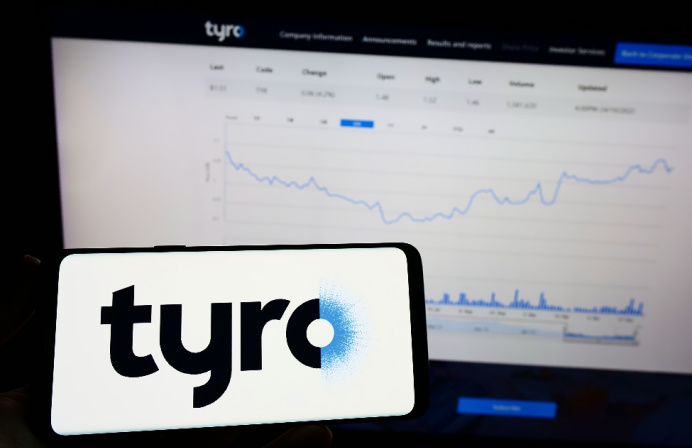
Tyro has reported a modest net normalised profit of $3.1 million in the first half of FY2023, a significant bounce back from the $11.2 million loss reported last year – and the first time since 2015 the payments fintech has hit profitability.
Releasing its half-year results today, Australia’s fifth largest Eftpos terminal provider also posted a 106 per cent jump (up $19.2 million) year-on-year in statutory net profit – hitting $1.1 million this interim reporting period.
It is also the first time the company has delivered profitability – as well as the first time achieving a positive free cash flow (+$0.6 million) – since it went public in 2019.
Most strikingly, Tyro posted a 600 per cent year-on-year jump in EBITDA, hitting $19.5 million.
Tyro reported that total revenue on a normalised basis was up 45.2 per cent to $216.6 million, with payments revenue alone accounting for $209.4 million of this value, up 43.5 per cent year-on-year.
Much of the positive profit results can be attributed to a significant 37 per cent year-on-year uptick in transaction value, totalling $21.7 billion, largely off the back of a post-Covid bounce back in retail transactions.
Tyro also made gains through a 5.7 basis point increase in merchant fees over the same period.
The strong increase in transaction value was largely driven by a 9 per cent increase in merchant clients (reaching 66,884 in total), with a 15 per cent growth in customer applications received in the period.
Fees and terminal rental income also grew from $145.4 million to $209.6 this reporting period.
However, increasing overheads dragged down Tyro’s profit margin, with a 49.6 per cent jump in direct expenses between H1FY22 and H1FY23, totalling $121.4 million, with operating expenses accounting for $101.9 million of this.
Notably, Tyro saw significant increases in lending and non-lending losses (up 123 per cent to $1.1 million), administrative and other expenses (up 53 per cent to $8.4 million), with terminal management and logistics nearly doubling to $3 million, while contractor and consulting expenses were up from $5.6 last reporting season to $8.8 million.
Tyro chief executive Jon Davey stressed that the company has become “a leaner and more disciplined organisation”, particularly after introducing a cost reduction program.
Announced last October, the cost-efficiency drive will yield an annualised cost saving of $11 million, Davey said – a small portion of this result achieved in the first half of FY23.
“This has allowed us to streamline our operations and focus our investment to be the leading specialist payment and banking solutions provider for Australian business”.
“An increased focus on growth, cost management and delivery excellence has led to very pleasing first half results, including a record EBITDA [up 601 per cent to $19.5 million] and achieving positive free cash flow for the first time as a publicly listed company,” Davey added.
The modest returns come after a challenging 12 months for Tyro, with the paytech this month settling a class action suit resulting from a several months-long payments terminal outage in early 2021.
Last December, Westpac’s pulled out of a proposed takeover after the big four bank declared the acquisition was “not in the best interests of… shareholders”.
Tyro’s share price fell to a three-month low of $1.18 following news of Westpac’s withdrawal (down 20.1 per cent on the previous Friday’s market day close price). Tyro is currently back up trading at $1.64 per share.
Over the last 12 months, Tyro released its Tyro Go, its portable eftpos reader, and pilots of its next-gen Tyro Pro terminals, and has moved to advance automated onboarding for merchant clients.





